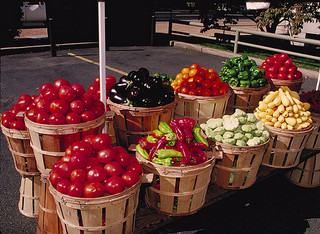Better brown-bags
Packing more in your lunch bag.
Do you take your lunch to work? Are you getting all the nutrition from that lunch can offer? Do you wish you could eat better all day long? Here are some questions you can ask yourself to see if you can improve your “brown-bag:”
- Does your lunch contain fruits or 100 percent fruit juices?
- Do you pack vegetables or vegetable juice?

- Are your sandwiches made with whole grain bread?
- Are your other grains, like pasta, enriched?
- Have you included low-fat dairy with your lunch?
- Are your meat proteins lean?
- Do you pack other protein rich foods like beans, eggs or nuts?
If your lunch bag doesn’t include all these foods on a regular basis, you may want to re-think your lunch. For an adequate diet, Michigan State University Extension says a person needs servings of fruits, vegetables, protein, dairy and whole grains. MyPlate shows that half your plate should be fruits and vegetables. Lunch can be a great time to increase servings of nutritious foods which helps to boost your daily intake to make sure you’re getting enough nutrients.
It’s simple to add washed fruit to your lunch. Vegetable juice is an easy way to add more nutrients and avoid the sodas and other sweetened drinks. Check your bread labels for the fiber content. If you can purchase breads with three or more grams a slice, you will be adding that nutrient to your diet. Look to differ the fillings of your sandwiches; instead of bologna every day, try lean chicken with a natural cheese – both dairy and protein can be checked off – or tuna (packed in water) salad with spinach. Many condiments are high in sodium and fat, so try to choose alternatives when assembling your sandwich. And how about some almonds or toasted soy nuts for a crunchy treat instead of those chips?
If you need to eat more vegetables, take raw carrots, celery and broccoli in your lunch bag with some low-fat dip or peanut butter. If you are not getting enough dairy, some cheese cubes or a low-fat yogurt can help. By being aware of what your eating for an entire day, you can make sure you’re getting what you need to stay healthy.
Lunches are sometimes very high in fat, sugars and sodium. If you choose to stick to the basic foods in the checklist above, you can avoid these additives and create a smart lunch! Planning is the key and lunch is a great meal to start with!



 Print
Print Email
Email



